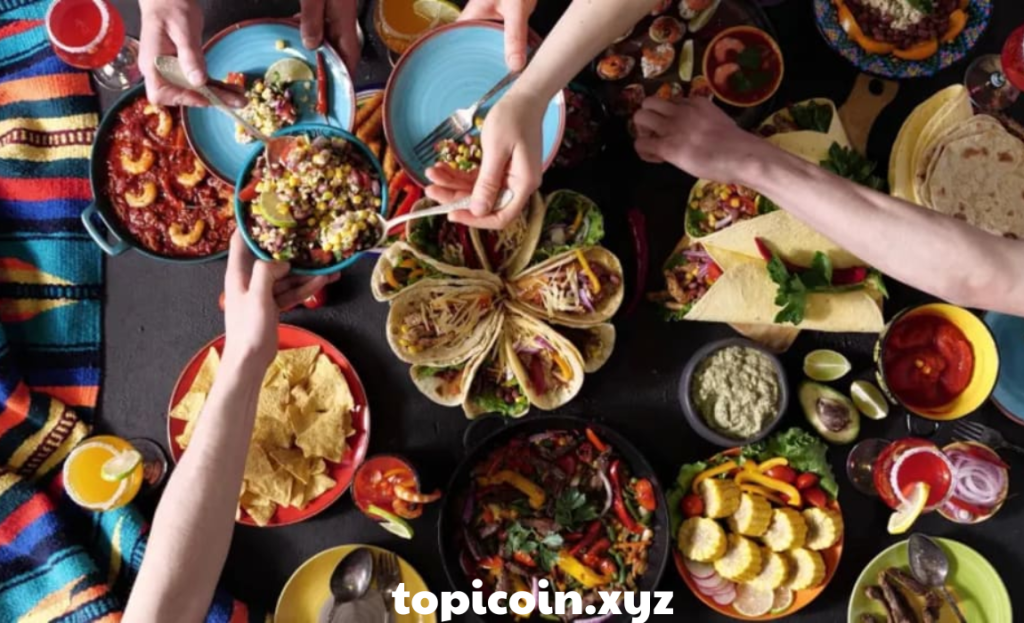Local Traditions
A Journey Through Traditional Foods: Exploring the Rich Flavors of Global Culinary Heritage
Traditional foods are a reflection of cultural identity, history, and the unique landscapes that shape the ingredients and flavors of each region. Passed down through generations, these dishes often tell stories of survival, celebration, and community, connecting people to their roots and heritage.
In this guide, we’ll explore some of the most iconic traditional foods from around the world, understanding the significance behind these dishes and their continued importance in modern culinary traditions.
1. What Are Traditional Foods?
Traditional foods refer to dishes and ingredients that have been consumed over long periods, often passed down through generations. These foods are typically prepared using locally sourced ingredients and cooking methods specific to a region or culture. The recipes may vary slightly from family to family, but the essence of the dish remains tied to its origins.
Traditional foods not only provide nutrition but also represent cultural practices, social gatherings, and historical events that have shaped the cuisine. They often use simple, unprocessed ingredients that reflect the resources available to communities in different times and places.
Key Characteristics of Traditional Foods:
- Historical Significance: Rooted in cultural heritage, traditional foods are often linked to historical events, religious practices, or seasonal celebrations.
- Local Ingredients: Traditional foods use ingredients that are native to or widely grown in a specific region.
- Simplicity and Authenticity: Many traditional dishes are prepared using age-old cooking techniques, with minimal reliance on modern processing.
2. Popular Traditional Foods from Around the World
From savory street food to elaborate holiday feasts, traditional foods come in many forms, reflecting the diversity of culinary practices across the globe. Here are some of the most beloved traditional dishes that have stood the test of time:
1. Italy: Pasta and Pizza
Italian cuisine is renowned for its simplicity and focus on fresh, high-quality ingredients. Two of the country’s most famous traditional foods are pasta and pizza, both of which have evolved into globally popular dishes.
- Pasta: From spaghetti and lasagna to ravioli and tortellini, pasta is a staple in Italian cuisine. It is typically paired with sauces made from tomatoes, olive oil, garlic, and herbs. While pasta has its origins in Italy, each region has its own version of traditional pasta dishes, such as Rome’s carbonara or Bologna’s ragù.
- Pizza: Naples is the birthplace of the traditional Neapolitan pizza, characterized by a thin, soft crust topped with fresh tomatoes, mozzarella cheese, and basil. While pizza is now enjoyed worldwide, the traditional Neapolitan recipe remains a beloved symbol of Italian culinary culture.
2. Japan: Sushi and Tempura
Japan’s traditional foods are known for their delicate flavors, precision in preparation, and presentation. Two of the most iconic traditional Japanese dishes are sushi and tempura.
- Sushi: Sushi, which dates back centuries, consists of vinegared rice paired with raw or cooked seafood, vegetables, or eggs. Served with soy sauce, wasabi, and pickled ginger, sushi reflects the Japanese emphasis on fresh, seasonal ingredients and balance of flavors.
- Tempura: Tempura is a dish of lightly battered and fried seafood or vegetables. Originating in the 16th century, tempura became popular in the Edo period and remains a favorite comfort food in Japan.
3. Mexico: Tacos and Tamales
Mexican cuisine is rich with traditional foods that celebrate the country’s indigenous heritage and Spanish influence. Two of the most well-known traditional Mexican dishes are tacos and tamales.
- Tacos: Tacos consist of a corn or flour tortilla filled with various ingredients such as meat, beans, cheese, and vegetables. They can be served soft or crispy and are often garnished with salsa, cilantro, and lime. The simplicity of tacos makes them a beloved street food in Mexico and around the world.
- Tamales: Tamales are made from masa (corn dough) stuffed with meats, cheese, or chilies, and wrapped in corn husks or banana leaves before being steamed. Tamales are often prepared for special occasions and celebrations, making them a traditional dish tied to family gatherings and holidays.
4. India: Biryani and Samosas
India’s diverse culinary landscape is filled with traditional foods that reflect its complex history and regional variations. Two popular traditional Indian dishes are biryani and samosas.
- Biryani: Biryani is a fragrant rice dish made with layers of spiced rice, marinated meats (usually chicken or lamb), and saffron. The dish is cooked slowly, allowing the flavors to meld together. Biryani is a staple at festivals and celebrations, particularly in northern India.
- Samosas: Samosas are deep-fried pastries filled with spiced potatoes, peas, or meat. They are commonly enjoyed as a snack or appetizer and are served with chutneys or sauces for dipping.
5. Greece: Moussaka and Spanakopita
Greek cuisine is known for its Mediterranean flavors and emphasis on fresh vegetables, herbs, and olive oil. Two traditional Greek dishes that showcase these ingredients are moussaka and spanakopita.
- Moussaka: Moussaka is a baked casserole made with layers of eggplant, ground meat (usually lamb), tomatoes, and béchamel sauce. This hearty dish is a staple in Greek households and is often served during family gatherings and celebrations.
- Spanakopita: Spanakopita is a savory pastry filled with spinach, feta cheese, and herbs, encased in layers of phyllo dough. This traditional Greek dish is often enjoyed as an appetizer or a light meal, particularly during festive occasions.
3. The Role of Traditional Foods in Cultural Celebrations
Traditional foods often play a central role in cultural celebrations and holidays, where they are prepared in large quantities and enjoyed by families and communities. These foods are not only nourishing but also symbolize cultural identity, unity, and tradition.
1. Feasts and Festivals
Many traditional foods are tied to specific holidays or festivals. For example, in the United States, the Thanksgiving holiday is closely associated with roasted turkey, stuffing, and cranberry sauce, while in China, the Mid-Autumn Festival is celebrated with mooncakes. These foods become symbols of the event itself, with recipes passed down through generations.
2. Religious and Spiritual Significance
Traditional foods are often tied to religious practices and rituals. For example, matzo, an unleavened bread, is a key food in Jewish Passover celebrations, symbolizing the Israelites’ exodus from Egypt. In Hindu culture, certain foods are prepared as offerings during religious festivals and ceremonies, signifying devotion and gratitude.
3. Community and Family Bonds
The preparation and sharing of traditional foods help strengthen family and community bonds. For many cultures, cooking and enjoying these dishes together are a way to honor ancestors, celebrate heritage, and pass on cultural knowledge to future generations.
4. Preserving Traditional Foods in the Modern World
In today’s globalized world, traditional foods face the challenge of maintaining their authenticity and cultural significance. Mass production, modern convenience foods, and changing dietary habits can sometimes overshadow traditional practices. However, efforts are being made around the world to preserve these culinary traditions.
1. Slow Food Movement
The Slow Food Movement, founded in Italy, advocates for the preservation of traditional food practices and the use of local, sustainable ingredients. This movement encourages people to reconnect with their food heritage and support small-scale farmers and artisanal producers.
2. Culinary Tourism
Culinary tourism, where travelers explore the traditional foods of different cultures, has become an increasingly popular way to preserve and celebrate culinary heritage. Visitors seek out local dishes and learn about the history and preparation methods, supporting traditional food cultures in the process.
3. Food Education
Many organizations and chefs are working to educate younger generations about the importance of traditional foods. Through cooking classes, festivals, and educational programs, people are learning to appreciate and maintain the culinary traditions of their ancestors.
Conclusion
Traditional foods offer a rich tapestry of flavors, history, and cultural significance that transcends time. From the simple ingredients of regional staples to the elaborate preparations of celebratory feasts, traditional dishes bring people together, preserving heritage while providing nourishment.
As global interest in food heritage grows, these traditional foods continue to play a central role in maintaining cultural identity, bringing joy and comfort to those who prepare and enjoy them.

